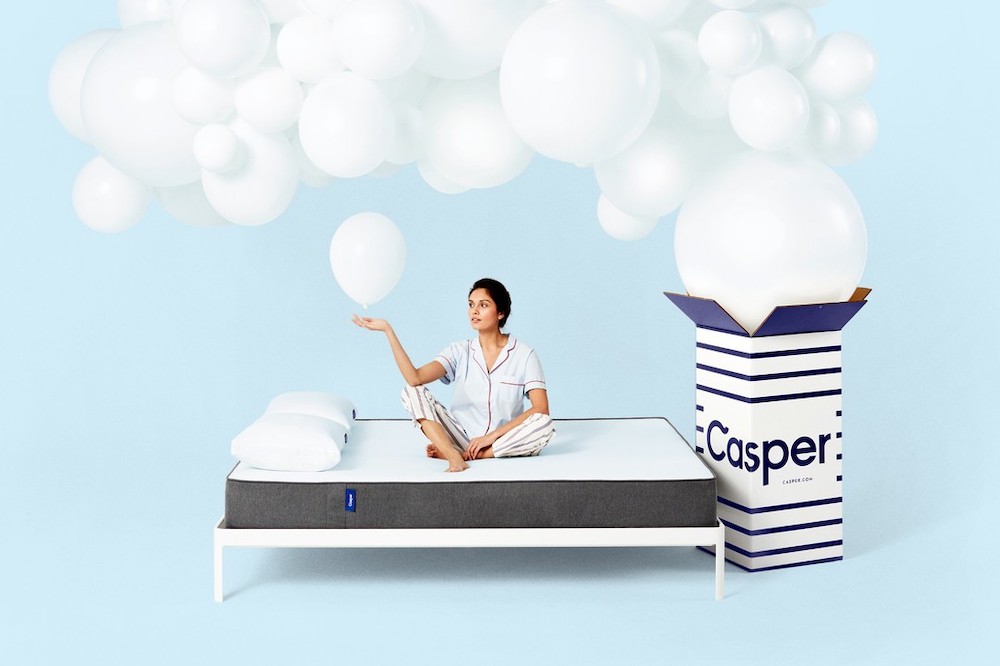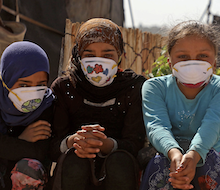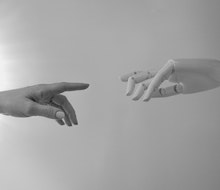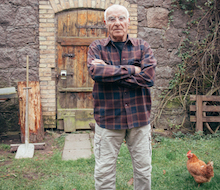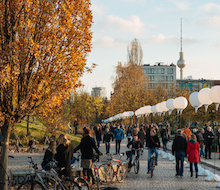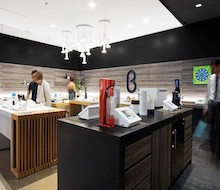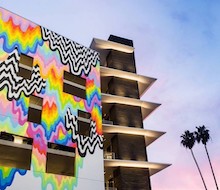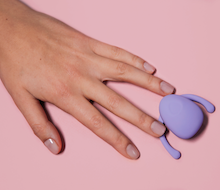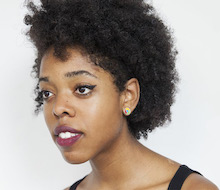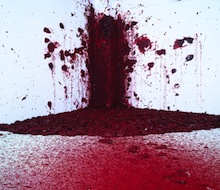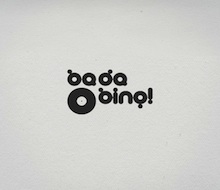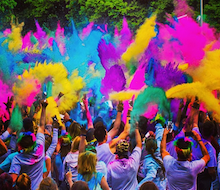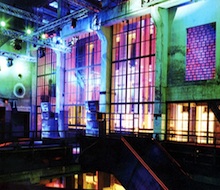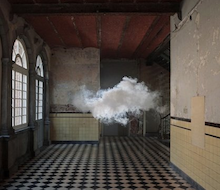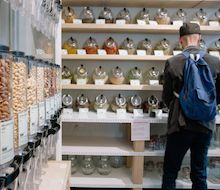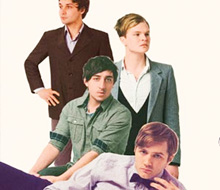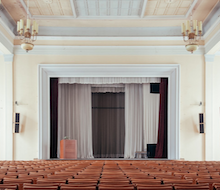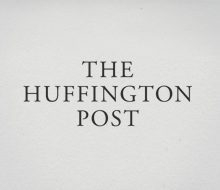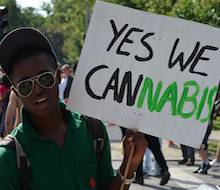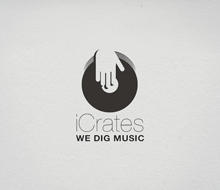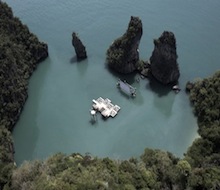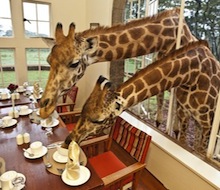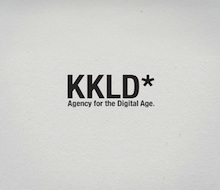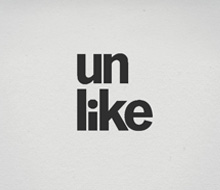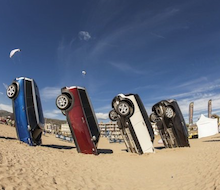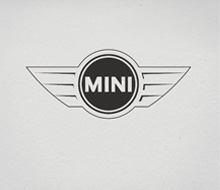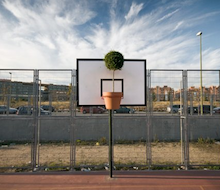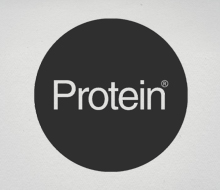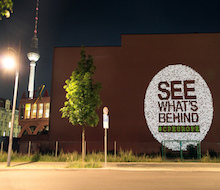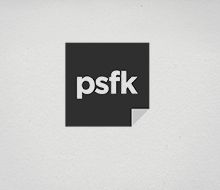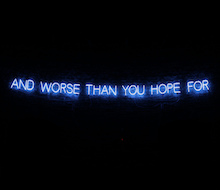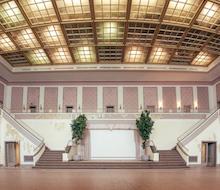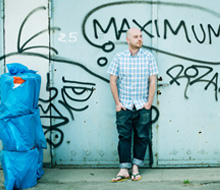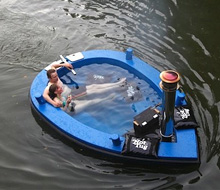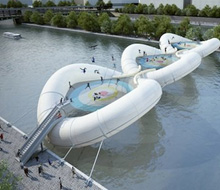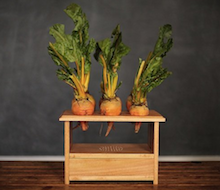I caught up with Casper’s Experiential Marketing Director Monica Brouwer to discuss how Casper is building meaningful brand experiences by offering rescue moments one “Zzz” at a time
You’ve hit your mid-afternoon, coffee-comedown slump and you think, “What would I give to get some shut-eye before my 2.30 meeting” when suddenly a caped superhero swoops in to the rescue, whisking you away to a nap pod where you can catch up on forty winks ’til show time. Well, this isn’t so far-fetched from the rescue moments that mattress company Casper offers people with its state-of-the-art brand activations. In fact, considering just how many podcast hosts, subway cars and Instagram ads are singing the mattress company’s praises of late, Casper really is like a real-life superhero—saving you from sleepness nights, not supervillians.
What Casper has accomplished since its founding four short years ago nothing is short of heroic. Over the past two years, Casper has made dreams come true with its 15-city mobile Nap Tour that made its way across the U.S., armed with ‘Napmobiles’ that offered consumers a chance to nod off while testing out its products. At SXSW 2017, Casper partnered up with the Standard Hotel and Tesla to provide last minute hotel rooms for $99 and 45-minute refresh rooms decked out with Casper mattresses, pillows, slippers, milk and cookies, and even a ‘mom’ to read them a bedtime story.
Let’s be real here—Casper has taken the sleepiest of industries (quite literally) and turned it into something that people associate with quintessential hipness. After all, we all sleep and we all spend a third of our life doing so—so why not celebrate a life well slept? For PSFK’s Advertising Playbook, I caught up with Casper’s Experiential Marketing Director Monica Brouwer to discuss how Casper is building meaningful brand experiences by offering rescue moments one “Zzz” at a time.
PSFK: What are you seeing as the biggest shifts in experiential marketing today?
Monica Brouwer: The line between experiential and retail is starting to blur. There are more and more direct-to-consumer brands utilizing experiential marketing as a test ground for retail. On the inverse, big box retailers are starting to adopt a shopping click economy where CRM is going to be challenged to become more and more sophisticated to capture the consumer between digital and offline in a much more thoughtful and meaningful way. We’re going to see a lot of rethinking in 2018—both when it comes to some of the traditional field marketing tactics that are shifting into the experiential world view, and how we approach traditional sponsorship and partnerships. Although the days of the logo slapper are winding down, there’s still a need for brands to find a connection with their consumers passion points.
In 2018, we’re going to start to see a bigger shift in how brands and event properties meaningful integrate different passion points across music, film, food, and so on. One of the best examples of that that I’ve seen is American Airlines at t the Toronto International Film Center (TIFF) They really thought through their positioning at TIFF, by not just creating an environment to capture celebrity and hope for coverage in the weeklies, but adapting their flight patterns to meet the needs of their consumer. They were really thoughtful in how they could create a better experience end to end, versus in the moment.
Can you speak to how Casper is coordinating its brand experiences that make it easier for its consumers to engage with the brand by seamlessly integrating into their everyday lifestyle?
When we’re designing Casper experiences, we’re really looking at the environment and the points of interaction we’re interested in capturing. We’re taking a second to understand what the real experience is. We’re not bringing a kazoo to a parade. We’re coming in there, asking our consumers, “What can we do that provides someone with a meaningful experience here?”
What we’ve identified and what we’re trying to create are rescue moments where we come into a space, understand the pain points and provide temporary relief, whether it’s a nap or to recharge your phone or finding a hotel room last minute at SXSW. We simply ask ourselves, “How can we be a hero? How can we help out?” When we’re coming in and identifying brand partners, we try to carve out our own space by being adjacent to the activity, not directly involved. We provide a hideout moment—a place provided by a brand that gives you an escape from the activity or your desk or the noise.
Also, as the wellness category continues to grow, consumers are willing to invest more and more in themselves. While Casper doesn’t directly identify in the wellness category, we’re really carving a space for sleep to exist as its own category. “The Nike of sleep,” as our founder, Philip Krim, always says. When we’re designing experiences for Casper, we’re trying to provide moments in the spaces where they might not normally occur or where a consumer might not take the time to take a pause and take care of themselves. It’s very much a wellness moment, but blended into a rescue moment. We’re trying to encourage consumers to take better care of themselves, and we do that through the design of our products and our experiences. We’re always trying to give consumers an opportunity to celebrate themselves and a life well slept.
Casper’s SSXSW activation with The Standard and Tesla was a huge success. How is Casper using these symbiotic partnerships to really extend its sphere of influence? Do you have any tips for other brands looking to sync up with partner brands?
When we approached The Standard, they really shared an interest in human-centered design, forward thinking in the hospitality space, and providing comfort and easy access in a way that we couldn’t provide at South by Southwest. Zooming out, all of the partnerships that we’ve done are built out of a mutual interest in connecting with one another’s audiences. The Standard, for example, gave us access to a really fantastic, culturally dialed-in audience. We gave them access to our early adopter tech audience, and that helped them launch their One Night app, which was really successful for them at the festival. It helped us introduce a more risk averse consumer; one that’s less aware of startups.
The key to audience growth is to find a brand that may not directly intersect with your current audience group. That gives you the opportunity to open the door to a new segment. The second piece is giving your customers value. How can you continue to drive loyalty with your existing base? Partnerships are an excellent way to do that because it gives both parties opportunities to test new co-branded products. This summer, we partnered with Target to create a line of products for college students. We created a lounger and a bed layer that gave an entirely new audience an opportunity to connect with Casper, but also gave our core consumers the opportunity to try a new product we might not have made had we not partnered with Target, and seen this great distribution and design opportunity.
We couldn’t speak about the next generation of brand experiences without speaking about influencers. How has the growing role of influencers, particularly micro-influencers, influenced brand promotion and content marketing?
Very early on, Casper partnered with Kylie (Jenner).. That was a huge moment for Casper that made headlines and was really phenomenal for our growth. Over time, though, there’s diminishing returns across the industry on the super influencer, on the celebrity endorsement online. Micro-influencers are becoming more important. Micro-influencers see four to five percent better improved engagement over a celebrity influencer with millions of followers, versus in the 100,000, 10,000 range. We are starting to work more and more with micro-influencers, but it’s a strategy that we’re still figuring out. There’s a big question of authenticity and sincerity that is becoming more obvious to consumers, as you see influencer marketing becoming more important.
That said, content marketing and influencer marketing will proliferate in a much smarter way. In 2018, we’ll start to see a better reflection of ad-adopted UGC that feels sincere and honest but still coming from the voice of the brand and not coming from the consumer as much.
I also think the shift in the Instagram algorithm made it pretty difficult for the super-brand. In 2018 especially, we’re going to go back to seeding even below the micro-influencer and trying to leverage smarter micro-influencers beyond that.
Glossier has done this in an incredible way by incentivizing their content through brand passion. The shortcut of purchasing will diminish as brands get smart and look at some of the startups and start to adopt that approach more.
At Casper Labs, you have 15,000 customers who are part of your product development process. They come to your events and they test prototypes. Can you expand on how Casper is aiming to make your consumers feel like they’re being given an exclusive experience?
Casper Labs is a group that gets exclusive access to products before they’re released and even while they’re in the development cycle. They’re engaged any time we begin exploring a new product vertical. We also have a two-way line of communication with them where the feedback loop is open. They’re shouting at us for products in different verticals all the time.
When we were developing the Casper pillow, we took a completely human-centered design approach and did testing for almost over a year exclusively with Casper Labs. I think exclusivity is really important because it gives the consumer the feeling of ownership of a brand. When a consumer feels like they helped shape the brand and the brand listens to them, it’s invaluable.
When a consumer feels like they’re part of your story, you become a part of theirs. In leveraging them to help us design products and shape Casper as a brand, we give them exclusive access to experiences as well. We invited them to join us to view the eclipse at our brand activation in Casper, Wyoming. We even host Casper Labs events where we bring in our chief design officer, and other really incredible people from design, science and technology to have fun, intelligent conversations. That said, our exclusivity is pretty inclusive. Anyone can write in and join Casper Labs. If they show us that they’re taking the incentive to do that, they’re in.
How else is Casper creating a strong sense of relevance and brand loyalty through micro, one-on-one engagements with their consumers?
One of the ways that Casper is creating loyalty with consumers is through experience design. As I mentioned before, we design products that allow consumers to dream their way to a better life, but we’re also very keen on designing experiences and spaces that enable us to do that as well, not just for Casper Labs but for any Casper customer. We’re constantly looking at opportunities where we can open the door to a consumer to help them experience something they may not have been able to have experienced before or may not have the means or the knowledge to approach it. For example, for our eclipse viewing event in Casper, Wyoming, not only did we invite Casper friends and family, but also the public. I was excited to see how many of our existing customers were excited to engage with Casper and purchase tickets to attend this event.
Any time we host experience in a specific market—like a film screening in Miami at the Standard or the eclipse viewing in Casper, Wyoming—the first thing we do is we look at our customer database and set aside tickets for our customers based there. They’re the first people we invite. We always allocate a percentage of anything we’re doing to engage our existing customers.
With this new generation of technology—VR, AR and AI—how is Casper enabling its participants to be granted access to groups of like-minded individuals?
This is going to be the most unpopular answer. [laughs] What we do best is design experiences that speak to a specific consumer interest. Camping, music, relaxation, film, and so on. The biggest trend we’re seeing is that people want to disconnect, not connect. We’re definitely going to look at AR and AI because utilizing intelligence devices to help tell our narrative while also giving the consumer privacy is super important across experiential and retail. However, I still think the biggest trend is going to be disconnecting.
Camp Casper is a great example of this. The people that came were interested in witnessing a natural phenomenon. They were OK with camping. They knew what they were signing up for. They were in a remote part of the country that didn’t have mobile service. Removing that barrier and having everyone turn off their screens was so engaging, to the extent that even when our bus was delayed at the campsite for a few hours upon arrival, nobody cared because they had made friends over the last 24 hours. They had a cold beer, they were having meaningful conversations and getting to know one another without the distraction of a screen. Finding those moments that allow consumers to disconnect and to have real conversations is key.
How is Casper is designing specific areas, locales or backdrops for fans to use their apps and services to create shared experiences and to encourage the fans to share their passions with one another?
We opened a pop-up in San Francisco called “The Wake Up”, shere consumers could come in and create content.There is an orange juice bar. There’s coffee. There’s bird houses that have a shifting light schematic that help you feel like you’re experiencing a sunrise and sunset—literally capturing the feeling of a “rise and shine”. We wanted to meet the demands of allowing people to trial the mattress, but also meet the demands of the community. In doing so, we partnered with different editorial partners for a storytelling series. We also opened it up to the community to book the space for their own events. One of the things that we’re super excited about is enabling our consumers to share our community spaces with us.
What are some of the biggest challenges and opportunities that you are seeing in the experiential marketing space? (Especially when it comes to creating these new immersive experiences and new immersive content that is less about storytelling and more about obviously story living)
The Museum of Ice Cream, The Color Factory or 29 Rooms show how we’re starting to build amusement parks for the selfie set. Brands are going to continue to do more of that. However, what consumers are going to hold them accountable for is making them truly purposeful and meaningful. 29 Rooms is a great example of that because every room ties back to a certain moment, supporting different artists and non-profit groups, fundraising for hurricane relief, and so on.
It’s also up to the brand to decide once that content is created how they leverage it in a meaningful way. That is probably the biggest challenge and opportunity for experiential marketing right now—how to take whopper UGC moments and turn them into conversion opportunities? I haven’t seen a moment where that’s occurred really well yet. Is it that it becomes a new revenue stream? Do brands rethink how they measure these social media amusement park moments? Do they start to monetize it? Is there a new revenue stream that’s created in place of it? Possibly.
I also think there’s a huge opportunity especially as retail vacancy starts occurring for brands to design and engage consumers in fun meaningful ways versus just a pop-up store. With the rise in retail vacancy, there’s becoming more and more opportunity for them to do this in a cost-effective way.
Can you shed light on the next generation of pop-up experiences and brand activations? How do you think experiential marketing will evolve over the next five, 10 and 20 years?
Retailers are coming to experiential marketers to help them integrate experiences into their environments. It’s becoming more and more competitive for them. Now every retailer needs an experience and a purpose. Experiential marketing has always been the sister of big PR stunts as well, but I think we’ll see less of that in the future because of that consumer amnesia that occurs now where moments are more fleeting, so consumers care less about big splashes. The good news, though, is that consumers are forgiving. The bad news is they’re forgetful. I think there will be a shift there.
The biggest challenge of an experiential marketer is measurement. When you’re explaining to your CMO why experience matters, it’s challenging. The metrics have evolved over time. At first it was impressions. I believe impressions are a vanity metric. There’s 92 different ways to measure them.Impressions can be measured 92 ways sideways and they’re never fully valid. Social engagement was the biggest way to measure—audience growth over time and strategic segmented audience growth. That’s where I think an experiential marketer is really going to be able to show a CMO value in what they’re doing, and really digging into sentiment.
For more insights on how to nail your experiential marketing efforts in 2018 and beyond, check our PSFK’s Advertising Playbook.

